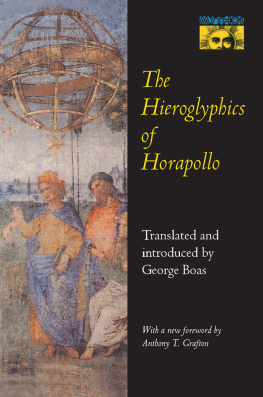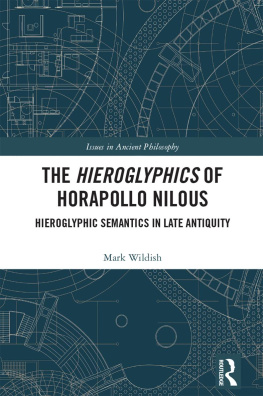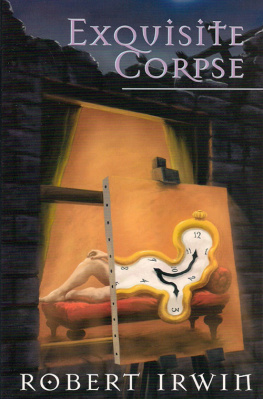John T. Irwin - American Hieroglyphics
Here you can read online John T. Irwin - American Hieroglyphics full text of the book (entire story) in english for free. Download pdf and epub, get meaning, cover and reviews about this ebook. year: 2016, publisher: Johns Hopkins University Press, genre: Religion. Description of the work, (preface) as well as reviews are available. Best literature library LitArk.com created for fans of good reading and offers a wide selection of genres:
Romance novel
Science fiction
Adventure
Detective
Science
History
Home and family
Prose
Art
Politics
Computer
Non-fiction
Religion
Business
Children
Humor
Choose a favorite category and find really read worthwhile books. Enjoy immersion in the world of imagination, feel the emotions of the characters or learn something new for yourself, make an fascinating discovery.

- Book:American Hieroglyphics
- Author:
- Publisher:Johns Hopkins University Press
- Genre:
- Year:2016
- Rating:5 / 5
- Favourites:Add to favourites
- Your mark:
- 100
- 1
- 2
- 3
- 4
- 5
American Hieroglyphics: summary, description and annotation
We offer to read an annotation, description, summary or preface (depends on what the author of the book "American Hieroglyphics" wrote himself). If you haven't found the necessary information about the book — write in the comments, we will try to find it.
American Hieroglyphics — read online for free the complete book (whole text) full work
Below is the text of the book, divided by pages. System saving the place of the last page read, allows you to conveniently read the book "American Hieroglyphics" online for free, without having to search again every time where you left off. Put a bookmark, and you can go to the page where you finished reading at any time.
Font size:
Interval:
Bookmark:
AMERICAN HIEROGLYPHICS
The Symbol of the Egyptian Hieroglyphics in the American Renaissance
JOHN T. IRWIN

Copyright 1980 by Yale University
All rights reserved
Printed in the United States of America
Originally published in 1980 by Yale University Press
Johns Hopkins Paperbacks edition, 1983
The Johns Hopkins University Press, Baltimore, Maryland 21218
The Johns Hopkins Press Ltd., London
Library of Congress Cataloging in Publication Data
Irwin, John T.
American hieroglyphics.
Includes bibliographical references and index.
1. American literature19th centuryHistory and criticism. 2. Hieroglyphics in literature. 3. Egypt in literature. 4. American literatureEgyptian influences. 5. Symbolism in literature. I. Title.
PS217.H54I7 1983 810.915 83-6153
ISBN 0-8018-2908-9
For Laura,
the face in the misty light,
and for
the outrageous Harold
American Hieroglyphics is the third part of a triangular work whose first two parts are John Bricuths The Heisenberg Variations (1976) and my Doubling and Incest / Repetition and Revenge (1975). In its own way, each of these books deals with the notion of the writers corpus as an inscribed shadow self, a hieroglyphic double. The present book begins by examining the impact of the decipherment of the Egyptian hieroglyphics on nineteenth-century American literature, and then, ranging back and forth over literary history, practical criticism of individual works, and speculative criticism, it relates the image of the hieroglyphics to the larger reciprocal questions of the origin and limits of symbolization and the symbolization of origins and ends. The only part of the book that may pose some difficulty for the reader is the series of speculative digressions in the section on Poe. In the process of providing background material for Poes work, these digressions sometimes elaborate their specialized lines of inquiry at such length that Poe seems to fade into the background and vanishan enactment of the kind of figure/ground reversal that is one of the themes of the Poe section. Yet this reversal inevitably reverses itself in turn, and the figure of Poe reemerges against a more complex background with, one hopes, even greater definition.
I began work on American Hieroglyphics in 1971, and during the early stages of my research I was guided by the generous advice of four of my colleagues at Johns HopkinsDon Cameron Allen, Earl Wasserman, Larry Holland, and Hans Goedicke. During the lengthy period of the books composition, its scope and methodology altered substantially, due in part to the suggestions of friends with whom I discussed the manuscript. I want to thank Hillis Miller, Ron Paulson, Harold Bloom, Geoffrey Hartman, Dick Brodhead, Stanley Cavell, Bill Irwin, Hugh Kenner, Guy Davenport, Del Hillers, George Krotkoff, and Bill McClain for their help. I also want to express my deep appreciation to two friendsHarry and Claudia Sieberwhose kindness and encouragement sustained me during the years that I worked on the book. Kathleen Tavel of the University of Georgia Library and Martha Hubbard of the Milton S. Eisenhower Library helped me in my research; and Mary Camerer and Dorothy DeWitt assisted me in the final preparation of the manuscript. Laura Irwin helped revise and proofread the manuscript and shook her head when the sentences got too long. Finally, I want to thank the editors of American Quarterly and New Literary History for permission to reprint material that had previously appeared in their magazines.
Baltimore, August 1979
Emerson, Thoreau, and Whitman
No, I think that if you examine our rewriting of the equation once again you will be struck as I was by how much it reminds me of Emersons remark that mans victorious thought comes up with and reduces all things, until the world becomes at last only a realized will,the double of the man. That is a remark of Emersons that has never been properly appreciated because Emerson never said it, and in fact isnt that the way of the world? for my equation is at once a reduction and a mirroring, it simultaneously occupies a border point and is self-generative.
John Bricuth, A New Model of the Universe,
from The Heisenberg Variations
Champollion and the Historical Background; Emersons Hieroglyphical Emblems
The name Champollion appears in some of the most important literary works of the American RenaissanceEmersons History, Poes Eureka, Thoreaus Walden, and Melvilles Mardi and Moby-Dick, to name a few. Yet for most modern readers, it is a name that requires an identifying footnote. Jean-Franois Champollion was the Frenchman who, in the 1820s, deciphered Egyptian hieroglyphic writing with the aid of the bilingual text of the Rosetta stonea discovery that marked the beginning of modern Egyptology. Yet surely that piece of information provokes another question. Why would Champollion be mentioned in works as seemingly remote from his achievements as Thoreaus account of a stay at Walden Pond or Melvilles story of the hunt for a white whale? That Europe and America, during the period 1800-50, were swept by a wave of interest in the antiquities of Egypt is nowadays one of the less well remembered facets of nineteenth-century history. When Napoleon invaded Egypt in 1798, he was accompanied by a group of 150 scientists and artists (mostly from the Acadmie des Inscriptions) whose task was the investigation of the conquered territory. With the surrender of the French army in Egypt (1801), the British claimed as spoils of war all the antiquities gathered by the French scientists. Among these antiquities was the Rosetta stone, which arrived in England in February 1802.
By 1806 a soldier of fortune named Mohammed Ali had forced the Turks to recognize him as pasha of Egypt, and during his long reign he encouraged the competition between the French and English agents dart operating in his country, a competition that resulted in the flooding of Europe and then America with every shape and form of Egyptian artifact. In a tone at once Olympian and Yankee, Edward Everett remarked in The North American Review (1823), Since the days of the Romans, who plundered Egypt of obelisks and transported whole colonnades of marble pillars from Italy to Constantinople, this magnificent kind of robbery never flourished more than at the present moment.
At the time Everett wrote, the Egyptian revival in America was just beginning. In 1823 an Egyptian sarcophagus was presented to the city of Boston by a Smyrna merchant named van Lennep.
At the same time that Egyptian antiquities were arriving in America, the Egyptian style in architecture was changing the appearance of American towns. The style left its mark on structures as various as the Washington Monument (1845-85), the entrance to the Grove Street Cemetery in New Haven, and the New York Halls of Justice (1836-38) As one writer has noted, the most important moderating influence on the Greek revival in American architecture was the Egyptian revival.
In 1842 George Gliddon, who had been American vice-consul in Cairo, came to Boston to give a series of lectures on Egyptian antiquities. The talks, illustrated with artifacts loaned by Colonel Mendes Cohen, were so successful that Gliddon toured the country for the next two years. His audiences often ran as high as 2,000 persons at a single performance, and the small book that he published in 1843 sold 24,000 copies.
Next pageFont size:
Interval:
Bookmark:
Similar books «American Hieroglyphics»
Look at similar books to American Hieroglyphics. We have selected literature similar in name and meaning in the hope of providing readers with more options to find new, interesting, not yet read works.
Discussion, reviews of the book American Hieroglyphics and just readers' own opinions. Leave your comments, write what you think about the work, its meaning or the main characters. Specify what exactly you liked and what you didn't like, and why you think so.








